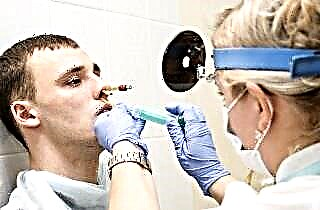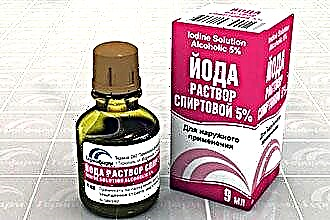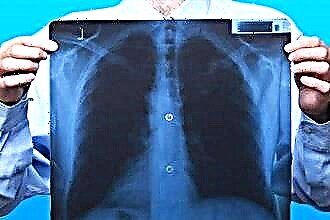People are often very frightened when they find they have blood clots from their nose. If this happens infrequently, then the alarm is unfounded. There can be very simple everyday reasons for this, which will not be difficult to eliminate. But when blood traces or clots begin to appear regularly, it is best to consult a doctor, as in this case, the cause may be an acute or chronic illness.
How blood appears
Most often, already dried blood clots appear in the morning. Especially if the air in the bedroom is dry and hot. Mucous membranes of the nose for a few  hours spent in such conditions dry out very much and become covered with crusts, tightly adhering to them. When cleansing the nose (blowing your nose hard, and even more so if you dig into it with your finger), the crusts come off, damaging the capillaries lining the nasal passages.
hours spent in such conditions dry out very much and become covered with crusts, tightly adhering to them. When cleansing the nose (blowing your nose hard, and even more so if you dig into it with your finger), the crusts come off, damaging the capillaries lining the nasal passages.
When nose bleeds from the front of the nose, it is usually light and harmless bleeding.... It is much worse if the bleeding is running from the back of the nose. This could indicate damage to blood vessels, serious injury, or bleeding from other internal organs (stomach, pulmonary). Not finding a way out, blood begins to ooze through the throat and nose.
It is with posterior bleeding that nasal discharge resembles a bloody runny nose, which is sometimes difficult to stop. But even if it is possible to do this without the help of doctors, then blood clots formed on the walls of the nasal passages continue to leave the nose for some time. Such bleeding can lead to large blood loss and even hemorrhagic shock.
Local causes
The reasons why blood clots may appear in the nose are conventionally divided by doctors into two large categories: local and general. Local includes everything related to the nose and sinuses:
- Any kind of injury. Blood from the nose can come from both an accidental slight blow and from a fracture. It all depends on the individual characteristics of the organism. If, after an injury, severe swelling has formed, there is a wound, or the shape of the nose has changed, an urgent need to go to the hospital.
- Consequences of surgical operations. Alas, they do not always go smoothly, but even so, remember that in
 the first day or two after removal of polyps and tonsils, puncture of the maxillary sinus and other invasive manipulations, blood clots may continue to appear.
the first day or two after removal of polyps and tonsils, puncture of the maxillary sinus and other invasive manipulations, blood clots may continue to appear. - Ingress of foreign bodies. If they are small and hard (grains of sand, grains, insects), they can constantly scratch or irritate the nasal passage, damaging the capillaries and causing slight bleeding.
- Exposure to external irritants, including allergens. Leads to loosening, swelling, and subsequently atrophy and bleeding of the mucous membranes of the nose, the formation of polyps.
- Chronic diseases of the nose and sinuses. With an exacerbation, purulent-inflammatory processes often break out, during which traces and blood clots in the mucus secreted from the nose are constantly present.
- Polyps, angeomas and other formations. These are tissues of the nose with a changed structure, which are easily destroyed and damaged. So, vascular angeoma is a kind of plexus of small vessels, which, even with light pressure, begins to bleed.
- Curvature of the nasal septum. If it is strong enough, it leads to stagnation of mucus, atrophy of the mucous membranes and chronic inflammatory processes.
Problems with local causes are usually dealt with by an otolaryngologist. It is he who can quickly and efficiently conduct an examination, if necessary, prescribe additional tests and diagnostic procedures and choose the optimal course of treatment.
Sometimes the regular appearance of blood clots in the nose is one of the symptoms of occupational respiratory diseases.
People working in mines, hot shops, foundries, textile factories and chemical plants quite often have chronic respiratory diseases. They should consult a doctor regularly and take measures to restore irritated mucous membranes.
Common Causes
Common causes are much more difficult to identify and eliminate. There are many diagnoses in which a bloody runny nose can become one of the symptoms.  or persistent blood clots in the nose. We will give here only the most obvious and common, but each case is individual. Therefore, even if you find similar symptoms in yourself, do not self-medicate, but go for a diagnostic examination.
or persistent blood clots in the nose. We will give here only the most obvious and common, but each case is individual. Therefore, even if you find similar symptoms in yourself, do not self-medicate, but go for a diagnostic examination.
- Hemophilia or thrombocytopenia. Diseases in which blood does not coagulate well and even from a small wound can flow for hours. A slight damage to the mucous membrane is enough for nasal discharge to be with blood clots for a long time. Usually people suffering from such diseases know about this - they often have bruises that do not go away for a long time; even with a light blow, hematomas form under the skin.
- Arterial hypertension. Stable high blood pressure puts additional stress on the heart and blood vessels. Small capillaries, which are lined with the nasal mucosa, do not withstand and burst. This often happens at night, and in the morning a blood clot comes out of the nose.
- Atherosclerosis. Vascular fragility caused by changes in the structure. A serious disease that is almost impossible to completely cure. But if you do not restrain its development, then the likelihood of a stroke is high.
- Vasculitis. Autoimmune disease (hereditary or acquired), which can be provoked by prolonged exposure to a strong allergen. In this case, large and small blood vessels are affected and subcutaneous hemorrhages occur.
- Bronchial asthma. Its characteristic symptom is a strong, suffocating cough of a paroxysmal nature. It creates a strong tension in the blood vessels of the head, and small capillaries can not withstand and burst.
 Cardiovascular diseases. They cause sharp jumps in blood pressure, which quickly wear out blood vessels and capillaries. This leads to their systematic rupture and the appearance of bloody clots and crusts in the nasal cavity.
Cardiovascular diseases. They cause sharp jumps in blood pressure, which quickly wear out blood vessels and capillaries. This leads to their systematic rupture and the appearance of bloody clots and crusts in the nasal cavity.- Cancer diseases. Malignant neoplasms quickly destroy not only the organ in which they appeared, but the entire body. Including cause fragility of blood vessels and a sharp drop in immunity.
To identify an accurate diagnosis, you will have to pass a number of tests and go through the necessary diagnostic procedures. But this must be done if blood clots in the nose are constantly present.
The problem is not only that the mucous membrane, which constantly bleeds, is an open gateway for any infection, but also that if the treatment of the underlying disease is not started on time, serious complications can develop.
Prevention measures
The development of chronic diseases can only be prevented by regular preventive medical examinations. But, unfortunately, lately more and more people are neglecting this simple rule and do not want to waste time and money on them. Perhaps the regularly appearing blood clots in the nose will force you to do this and allow you to discover a "hidden" disease and prevent it from developing.
Additional preventive measures are:
 giving up bad habits, primarily from smoking, which literally destroys the mucous membranes of the nose;
giving up bad habits, primarily from smoking, which literally destroys the mucous membranes of the nose;- the use of personal respiratory protection when working in "harmful" industries;
- timely treatment of the common cold and other symptoms of respiratory diseases;
- reasonable and moderate use of vasoconstrictor nasal drops;
- rational nutrition, rich in vitamins and microelements, if necessary, an additional course of multivitamins;
- clean and moderately humid air in the working and living space, no dust and strong odors;
- correct use of household chemicals, storing them in a tightly closed container in a specially designated place.
Correct and regular care of the nasal cavity is equally important. If the crusts form constantly, then you can not peel them off, but you need to drip your nose with oil, and then gently clean it with a gauze swab and rinse.
A healthy strong immunity is the body's best defense against colds and respiratory diseases. Therefore, it is advisable to do hardening procedures and provide the body with minimal physical activity, preferably in the fresh air. And then the only reason why blood clots can appear in the nose are injuries, and in most cases they can be avoided.

 the first day or two after removal of polyps and tonsils, puncture of the maxillary sinus and other invasive manipulations, blood clots may continue to appear.
the first day or two after removal of polyps and tonsils, puncture of the maxillary sinus and other invasive manipulations, blood clots may continue to appear. Cardiovascular diseases. They cause sharp jumps in blood pressure, which quickly wear out blood vessels and capillaries. This leads to their systematic rupture and the appearance of bloody clots and crusts in the nasal cavity.
Cardiovascular diseases. They cause sharp jumps in blood pressure, which quickly wear out blood vessels and capillaries. This leads to their systematic rupture and the appearance of bloody clots and crusts in the nasal cavity. giving up bad habits, primarily from smoking, which literally destroys the mucous membranes of the nose;
giving up bad habits, primarily from smoking, which literally destroys the mucous membranes of the nose;

